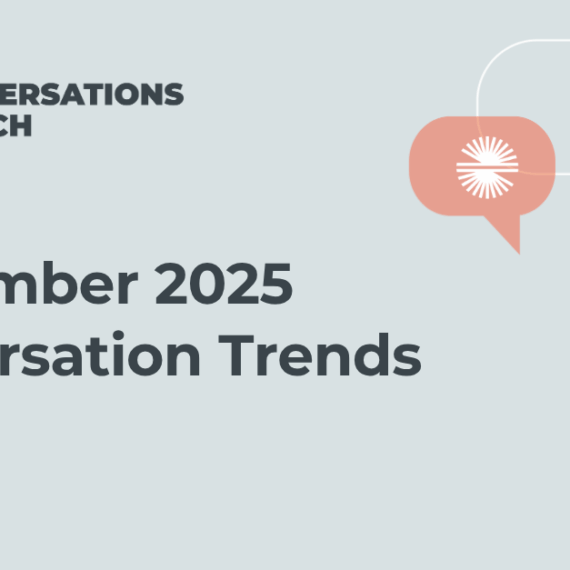Impressions are definitely not what they seem.
At first, they were used as a foundational unit of measure for publishers and advertisers, who built an entire economy negotiating to buy impressions by the thousands. They evolved into a lingua franca of marketing measurement, providing a comparable way to evaluate reach (impressions) and efficiency (CPM) across marketing vehicles and media outlets. They were then adapted to digital and social channels, as “visits” and “unique visitors” emerged to analyze traffic and compare reach among old and new media.
Along the way, many smart marketers and communicators questioned the value of impressions — proffering up new metrics that are more meaningful, and arguing for alternative terms that reflect real-world media consumption. At the core of the issue is that impressions don’t actually live up to the definition:
Impression: the effect or influence that something or someone has on a person’s thoughts or feelings Merriam-Webster
Of course, using a well-known term with a strong implied benefit is brilliant marketing. A universe of publishers, advertisers and agencies embraced the term and joined forces to grow advertising into a global $500B+ industry. Audit bureaus were created to validate circulation figures, and then someone came up with the brilliant idea to count “pass-along” rates — inflating the number of impressions by 2X or 3X or more based on the average sharing rates for that media outlet. Some PR people then distorted the concept further to create generic multipliers ranging from 2X to 10X for all media impression counts.
Thanks to George W. Bush, we have a label for all of this: fuzzy math. Or fuzzy logic. Or both.
The reality is that impressions as applied (not just implied) only count how many people potentiallyhad the opportunity to see your ad, story and/or content. They are typically calculated based on a publication’s reach or a site’s traffic, but unless you own the site, you don’t know how many people actually saw the individual piece of content.
In truth, most traditional publishers don’t actually know how many people saw your story or advertisement on page C5 on March 6, 2016. And they likely wouldn’t tell you if they did know — because $40 CPM x 2 million potential readers is worth a lot more than $40 CPM x 10,000 actual readers.
Fortunately for marketers, and unfortunately for publishers, the growth of digital and social media threatens to undercut the impressions-based economic model. We now live in a chaotic and confusing space that’s somewhere between the traditional CPM world (offline) and an increasingly pay-per-click world (online). Advertisers only want to pay for actual views and actual clicks online — and digital technology and tools allow us to track those views and clicks with increasing precision.
The Digital Analytics Association, Media Rating Council and others are working to change the way digital media is measured, and the Institute for PR, AMEC, WOMMA and SMM Standards Conclave are making similar strides to advance public relations, social media and word-of-mouth measurement.
So where do we go from here? I see three critical steps to moving us forward.
1. Evaluate channels and outlets via Reach + Engagement + Relevance.
As much as we might want a single metric to replace impressions, it’s not realistic. The world has diversified, opening up a range of channels and interaction modes that can’t be measured by a single number. With that said, we need a new lingua franca to compare media across channels and disciplines — and we can get there through a balanced combination of Reach, Engagement and Relevance.
- Reach is nothing new — it simply tells us what reach the publisher, web site and/or social channel has, based on circulation or readership or traffic. It’s already widely used for media planning, along with Frequency, and there’s no implication that an individual unit of content was seen — just that the site or outlet has a Reach of X people, which means the content has the potential to be seen by some percentage of X people.
- Engagement is a newer (or at least more visible) phenomenon that has become pervasive across digital and social media. Definitions and metrics vary, but in practice it reflects some action or reaction by an individual beyond their “exposure” to a company, person, content or idea. Engagement is easily (though inconsistently) tracked online, and the concept is equally relevant offline — though less visible and not as easily measured.
- Relevance has always been relevant, but never moreso than in today’s multi-channel, cross-discipline world. Content is king, context is queen, you know the rap. The question is how do we measure relevance? Media planners typically focus on audience relevance — and calculate “target” rating points for different media and campaigns. PR and social media planners typically look at content relevance, which can be analyzed via digital and social tools. Both approaches have merit, but we clearly need more data availability and new tools to measure this consistently across channels.
2. Replace multipliers with dividers.
Multipliers are the scourge of media measurement, taking an already inflated notion like “impressions” to a laughable extreme where PR people proudly claim that their campaign “reached” billions of people. Beyond the shift to Reach, Engagement and Relevance metrics, we need to replace multipliers with dividers to reflect the now-obvious reality of how media is consumed.
Specifically, if we know that only 10% of WSJ print readers are likely to read a specific story or see your ad on page C5, why would we count that as 2.3 million impressions (based on WSJ circulation figures)? Likewise, if we know Twitter and Facebook algorithms only show your posts to 12% of your followers, why would we credit your post with 5K impressions because you have 5K followers? In both cases, the real number of people who see your content depends on placement, time of day and week, readership patterns, algorithms, etc.
The trick here is that we only know some of this information required to apply the right divider calculation. But we do know dividers — based on both logic and publicly available information — far outweigh potential multipliers, and should be factored into our calculations even if precise data isn’t available. Which leads to…
3. Challenge publishers to share more real-world data.
This is the least likely step, which will take years to become mainstream, though we see it happening in dribs and drabs by progressive publishers. Social platforms are making it easier to access Reach and Engagement data for owned channels (Twitter Analytics, etc.), and social widgets can provide access to post-level Engagement data. However, most publishers don’t yet expose that data publicly in the way that Forbes.com or TechCrunch have. Larger advertisers have the most influence here, since publishers often provide access to non-public data to help justify larger ad buys.
All of this leads to a significant gap between the data we have for owned channels (robust and detailed) versus paid or earned channels (publisher-limited). Which makes life difficult but potentially very lucrative for the analytics experts who can synthesize the data to fuel smarter insights, decisions and campaigns.






